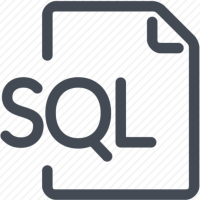

Overview
This SQL training course is for those who need to extract data from relational database servers like Microsoft SQL Server, Oracle, IBM DB2, PostgreSQL and MySQL using ANSI standard Structured Query Language (SQL). While attendees gain much experience designing complex SQL queries using standard functions, aggregate functions and joins, SQL action statements which facilitate data or database modification do not form part of this course. So as to master the syntax of the language, the course is highly practical in nature and the focus throughout is on coding SQL by hand. On completion, a comprehensive set of course notes, examples, tutor and attendee scripts are made available online for each attendee.
Prerequisites
No prior SQL training or relational database experience is assumed.
We can arrange your own private SQL course.
Have us build a custom private course tailored to your needs.
If you are looking to training a group of people private courses can be very cost effective.
Unlimited post course email support on the course topics.
This course was great, the trainer was very knowledgeable and has improved my knowledge considerably. The facilities are fantastic. Thank You!
Very informative course, very useful tips on how to work with SQL Management Studio. A lot of SQL quirks explained, a lot of good examples.
Really good course. lots of hands on practice and clear explanations.
A great course. The trainers experience and knowledge is a great asset.
I took so much away from this course and felt Stuart's teaching method was exceptional.
The trainer did a fantastic job of delivering the course and providing understanding